viktor_k67
Junior member
- Messages
- 41
- Likes
- 2
For many it could be obvious but there are some who does not even expect that it is possible to analyze the stocks listed in an index. Breadth analysis is based on the summary analysis of stocks listed in an index in order to define the general tendency among index constituents to assume a possible trend development in an index itself. Logic is simple - index price is calculated from its constituency prices, respectfully, index follows the majority of its constituents. You take a look at the listed stocks trends - you may assume where an index is moving.
Explanation to the charts below:
Pane #1: index candles
Pane #2: Advance decline volume. Green line represent summary volume of the advancing listed in the index stocks and red line represent summary volume of the declining listed in the index stocks
Pane #3: Advance decline volume oscillator - represent the difference between advancing and declining volume. It is basically the same as the indicator in the pane #2, just visually easier to see whether bullish (advancing volume) or bearish (declining volume) pressure is dominant
Pane #4: Summary volume of the stocks listed in the index with 4-day MA applied to it
Pane #5 High and lows - green line represent the number of listed in the index stocks which are hitting their 52-week highs and red line represent the number of the listed in the index stocks crashing their 52-week lows
Brief Breadth analysis of the charts below:
On the NYSE Composite (^NYA), S&P 500 (^SPX) and Russell 2000 (^RUT) the Bullish pressure (volume of the advancing stocks) remained dominant despite the small correction we had over the past two weeks. On the DJI (^DJI) and Nasdaq 100 (^NDX), volume associated with bearish stocks is stronger. Because of the bullish pressure dominance on the major indexes we may assume that there are good odds we may see the indexes moving back to heir April's highs. The technology sector may remain weak and may keep the indexes from the further advance.
The positive sign is that we do not see a big number of stocks making new 52-week lows. We have not seen a lot of then even on the Nasdaq 100 during the recent 6% decline from April's high. There is nothing close to what we had right before decline in August 2015 and right before strong slide in January-February 2016. This also confirm that current small correction on the Nasdaq 100 most likely will not push the market in a deep slide and most likely it will be just a small correction.
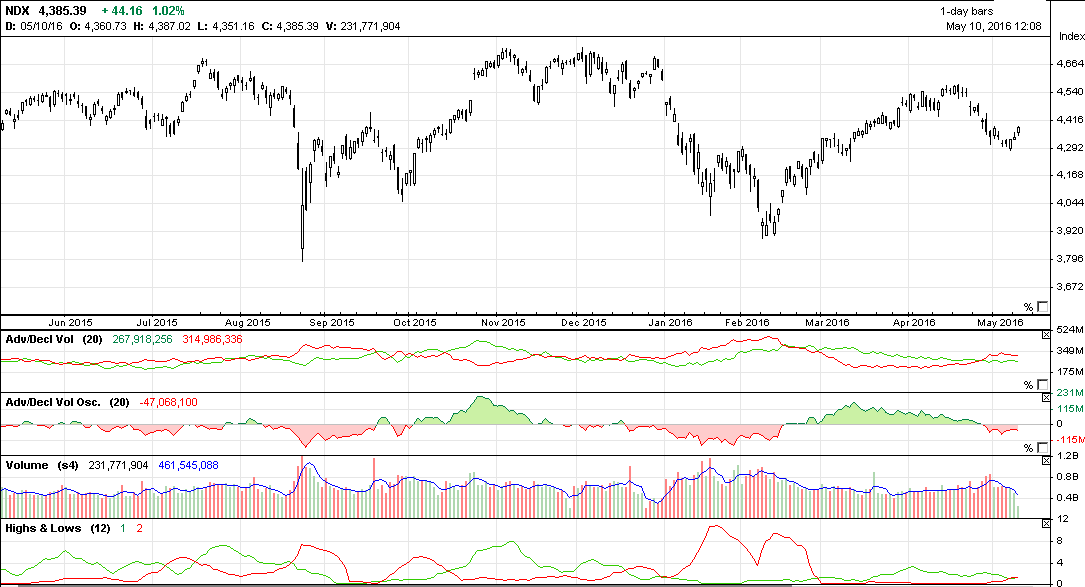
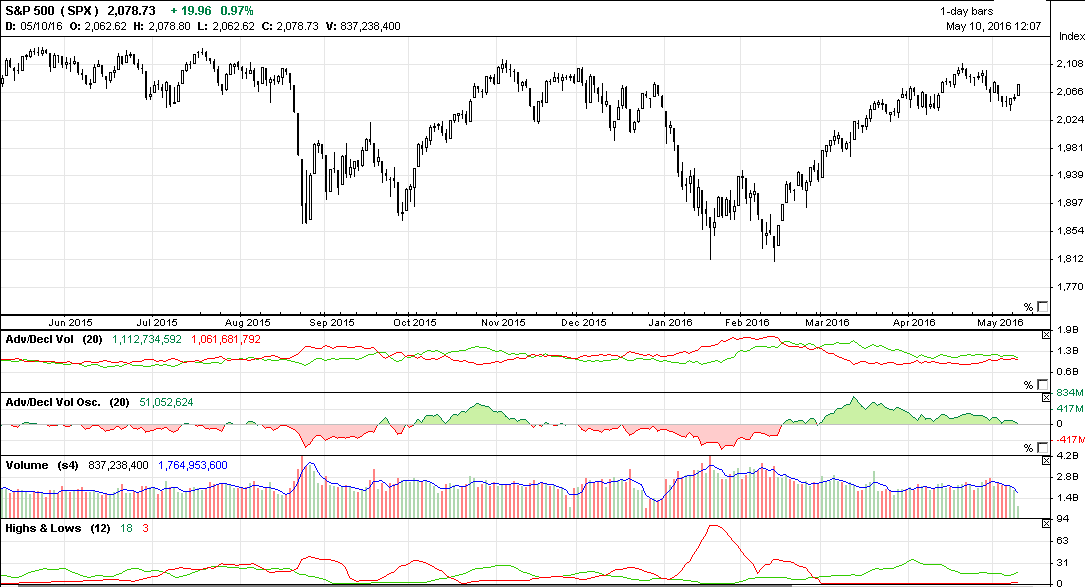
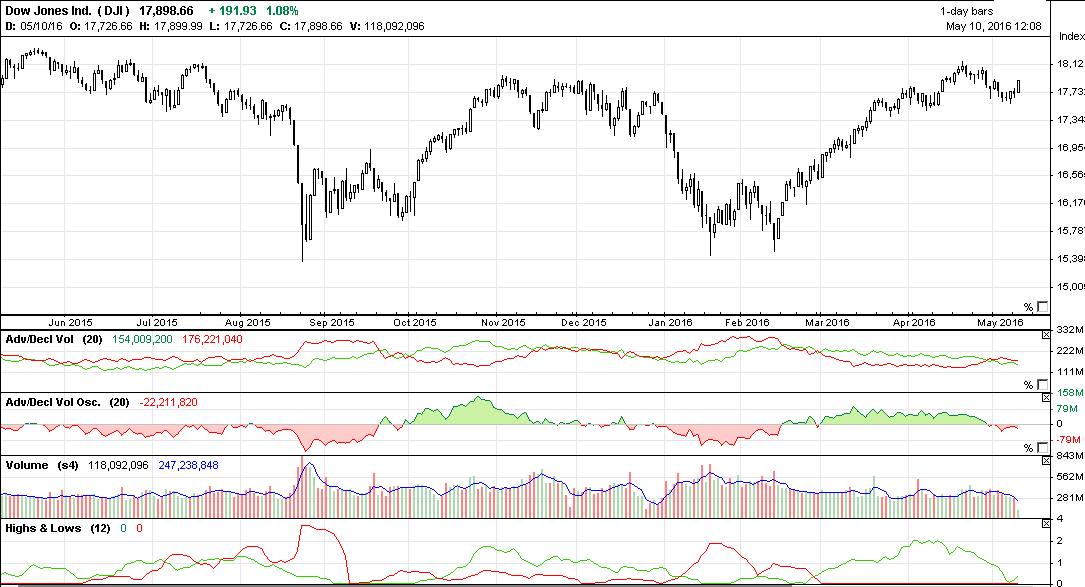
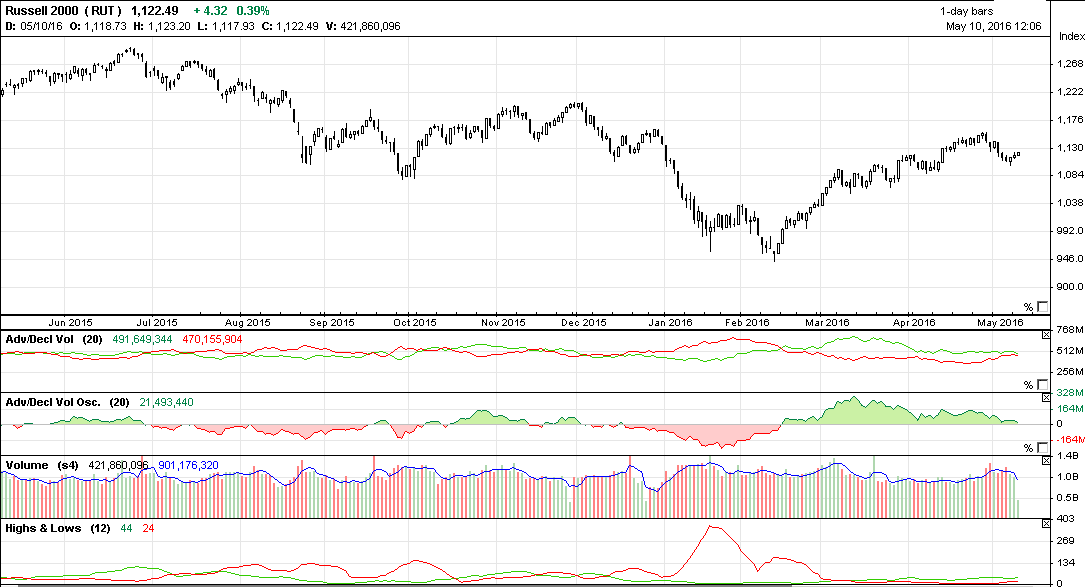
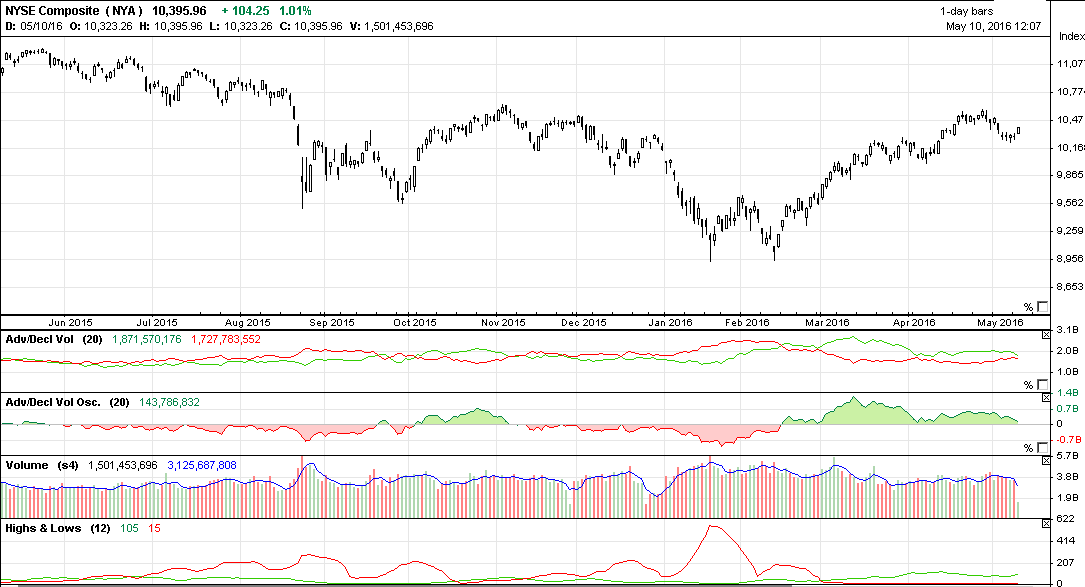
charts courtesy of http://www.marketvolume.com
Explanation to the charts below:
Pane #1: index candles
Pane #2: Advance decline volume. Green line represent summary volume of the advancing listed in the index stocks and red line represent summary volume of the declining listed in the index stocks
Pane #3: Advance decline volume oscillator - represent the difference between advancing and declining volume. It is basically the same as the indicator in the pane #2, just visually easier to see whether bullish (advancing volume) or bearish (declining volume) pressure is dominant
Pane #4: Summary volume of the stocks listed in the index with 4-day MA applied to it
Pane #5 High and lows - green line represent the number of listed in the index stocks which are hitting their 52-week highs and red line represent the number of the listed in the index stocks crashing their 52-week lows
Brief Breadth analysis of the charts below:
On the NYSE Composite (^NYA), S&P 500 (^SPX) and Russell 2000 (^RUT) the Bullish pressure (volume of the advancing stocks) remained dominant despite the small correction we had over the past two weeks. On the DJI (^DJI) and Nasdaq 100 (^NDX), volume associated with bearish stocks is stronger. Because of the bullish pressure dominance on the major indexes we may assume that there are good odds we may see the indexes moving back to heir April's highs. The technology sector may remain weak and may keep the indexes from the further advance.
The positive sign is that we do not see a big number of stocks making new 52-week lows. We have not seen a lot of then even on the Nasdaq 100 during the recent 6% decline from April's high. There is nothing close to what we had right before decline in August 2015 and right before strong slide in January-February 2016. This also confirm that current small correction on the Nasdaq 100 most likely will not push the market in a deep slide and most likely it will be just a small correction.





charts courtesy of http://www.marketvolume.com
